
- Index
- Brand
- Antelope Audio (62)
- Apogee (126)
- Arturia (71)
- Audient (184)
- Behringer (222)
- Focusrite (1003)
- Ik Multimedia (62)
- M-audio (187)
- Mackie (61)
- Motu (203)
- Native Instruments (68)
- Presonus (244)
- Rme (184)
- Roland (109)
- Solid State Logic (37)
- Ssl (37)
- Steinberg (130)
- Tascam (157)
- Universal Audio (94)
- Zoom (65)
- ... (1547)
- Form Factor
- Item Length
- Model
- 18i20 (18)
- 18i8 (21)
- Air 192 (32)
- Audiobox Usb 96 (29)
- Babyface Pro (28)
- Duet 2 (23)
- Evo 4 (23)
- Id14 (27)
- Id22 (27)
- M-track Solo (28)
- Mosc0025 (81)
- Saffire 6 (23)
- Scarlett 18i20 (27)
- Scarlett 2i2 (32)
- Scarlett 4i4 3rd Gen (42)
- Sz-ai2 (19)
- Umc204hd (26)
- Umc404hd (23)
- Us-16x08 (18)
- Vocal Studio Bundle (19)
- ... (4287)
- Size
- Type
- Analogue Mixer (6)
- Audio Interface (41)
- Audio Interfaces (54)
- Audio Mixer (24)
- Audio Visual (6)
- Audio_midi_interface (30)
- Broadcast Mixer (6)
- Compact Mixer (6)
- Digital Mixer (11)
- Digital Recorder (41)
- Dj Mixer (6)
- Electret Condenser (5)
- Interface (7)
- Interfaces (22)
- Keyboard Synthesizer (5)
- Live Mixer (8)
- Midi Interface (233)
- Mixing Console (32)
- Pci Audio Interface (4)
- Usb Audio Interface (1874)
- ... (2432)
MOTU 1248 Thunderbolt USB Audio Interface with AVB Networking and DSP BACKORDER
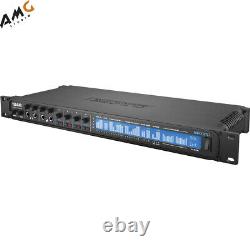
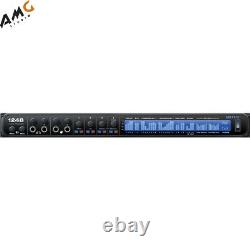
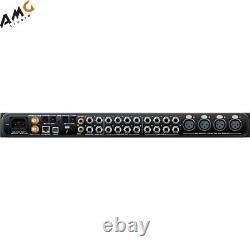
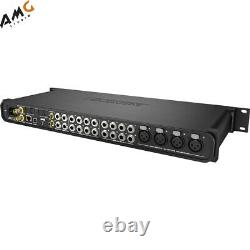
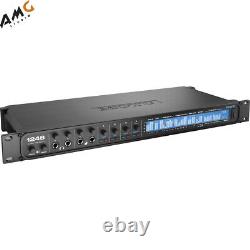


MOTU 1248 Thunderbolt USB Audio Interface w/ AVB Networking and DSP BACKORDER. What's in the box? The MOTU 1248 - Thunderbolt and USB Audio Interface With AVB Networking and DSP (32x34, 4 Mic) is designed for studio recording, installed sound, and live sound reinforcement applications such as mixing a band in a club or music venue. The 1U 19 rackmountable device features four balanced microphone inputs with individually switchable +48V phantom power, two dedicated hi-Z guitar inputs, 8 x 12 balanced analog with separate main and monitor outs, 2 x 8-channel ADAT optical, and RCA S/PDIF (with sample rate conversion), for a total of 32 inputs and 34 outputs. Additional I/O can be added to the system through AVB networking.
A front panel backlit 324 x 24 LCD provides detailed metering for all analog and digital I/O as well as provide a GUI for adjusting hardware settings. Using Thunderbolt connectivity, the audio interface can stream 128 audio channels in and 128 channels out to the interface's physical outputs, the DSP-powered 48 digital routing matrix, or AVB audio network streams.
The interface can also use high speed USB 2.0 (3.0 compatible) using class compliant drivers to work with most digital audio workstations. The 48-channel digital mixer can mix physical inputs on the interface, audio channels from your host computer software, AVB audio network streams, or mixer outputs.
It features seven stereo auxiliary busses, three groups, a reverb bus that can serve as an alternate 4th group, a main mix bus, and a separate monitor bus that can function as a solo buss. The mixer includes 32-bit floating point precision DSP-powered models of three British analog console EQ profiles, a classic compressor module with optional peak/RMS operation, and a model of the legendary Telextronix LA-2A optical leveling amplifier with automatic gain control (AGC) characteristics. Each input channel strip features a high-pass filter, a gate, a four-band parametric EQ, and a compressor.
The device's digital routing matrix allows you to route any source signal such as an analog or digital interface input, computer channel, mixer bus output, or network stream to any destination such as an interface output, host software input, mixer input, or any other device (or computer) on the AVB network. A single input or stereo pair can also be split and sent to multiple destinations. The first of its kind, this interface features an AVB Ethernet port that adopts the AVB industry networking standard for transporting high-bandwidth, low-latency audio and video over Ethernet. It was developed by the IEEE and enables connection to a second MOTU AVB audio interface (1248, 8M, or 16A) via a CAT-5E or CAT-6 Ethernet cable.
The standard is open meaning it is not proprietary and will allow for open interoperability across different devices and brands. Sixteen 8-channel network streams may be broadcast while simultaneously listening to sixteen 8-channel network streams. The AVB network provides its own network-wide time base for phase locking all connected devices and also allows one of the connected devices to be assigned as the master clock. An added benefit of the AVB network standard is the automatic device discovery for self-configuration, 100 meter cable runs, as well as the system's Stream Reservation Protocol which provides guaranteed Quality of Service (QoS) and an uninterrupted point-to-point network connection. This allows the interface to be controlled using Mac, Windows, Linux, iOS, and Android devices provided they share the same network.By connecting an Apple Airport or other Wi-Fi router directly to the interface with a standard Ethernet cable, the mixing and DSP controls of the interface can be managed using a Smartphone or tablet, without the need for a computer. This is useful for situations such as mixing live sound. A total of up to 12 independent stereo mixes can all be independently controlled by different engineers or musicians via Wi-Fi connected iPhones or iPads.
The device includes a collection of quick setup presets designed for different applications in the studio, on stage, or for installed sound such as a recording interface or network snake. Presets can be customized using the digital routing matrix as well as saved for future recall. Provides 123 dB dynamic range and a THD+N of -110 dB (0.0003%) at -1 dBFS, un-weighted, 1 kHz. Connects to computer with Thunderbolt or high-speed USB 2.0 (compatible with USB 3.0) with class-compliant firmware and industry standard drivers to work with any audio software.
On-Board DSP With Mixing And Effects. Provides flexible 48 input digital mixer modeled after large format mixing consoles with 12 stereo busses and DSP effects including reverb, 4-band EQ, gate, and compression. Provides ample headroom for mixing and effects DSP. Provides classic reverb, compression modeled after historic LA-2A compressor, and EQ modeled after analog console EQs.
System Expansion and Audio Networking. Multiple interfaces can be networked together with over 100 meter cable runs to stream audio between devices and computers on the network. Provides flexible digital matrix routing and splitting for any analog or digital input, computer channel or network stream to any computer, output, or network devices. A single input can be split to multiple output destinations.
256 Channels of Network Audio I/O To Host Computer. Allows monitoring and recording of up to 128 network audio channels in and 128 network channels out through a Thunderbolt connection to a host computer. Stand-alone Mixing With Wireless Control. Allows you to connect an Apple Airport or other Wi-Fi router directly to the audio interface with a standard Ethernet cable and control the device's mixing and DSP effects from a Smartphone or tablet, without a computer such as in live sound mixing applications. Allows connection of outboard digital processors, digital mixers or other gear, 16 channels at 44.1/48 kHz or 8 channels at 88.2/96 kHz.Features large backlit 324 x 24 LCD that allows you to view all signal activity at a glance with detailed metering of analog and digital I/O, as well as access to hardware settings from font panel GUI. MOTU 1248 - Thunderbolt and USB Audio Interface With AVB Networking and DSP (32x34, 4 Mic). 23.5 x 11.4 x 5.3. Broken seals, ripped packaging, damaged product, missing accessories, etc.
The item "MOTU 1248 Thunderbolt USB Audio Interface with AVB Networking and DSP BACKORDER" is in sale since Wednesday, January 24, 2018. This item is in the category "Musical Instruments & Gear\Pro Audio Equipment\Audio/MIDI Interfaces". The seller is "amg_studio" and is located in Columbus, Ohio. This item can be shipped worldwide.- Brand: MOTU
- Type: Thunderbolt Audio Interface
- Model: 1248
- MPN: 9300
- Form Factor: Rackmount
- Features: Phantom Power
- Input/Output Ports: Analog In
- Interface Type: Line/Audio Interface
- Max.
Number of Channels: 32
- Mic/Line Input: Line TRS 1/4"
- Suitable For: Studio Recording
- UPC: 839128005907

